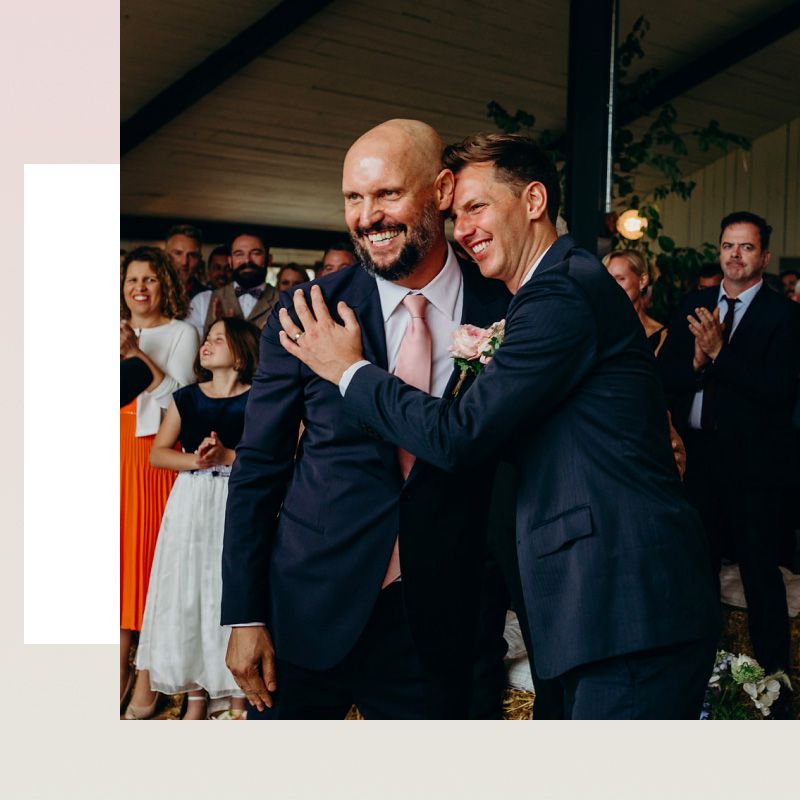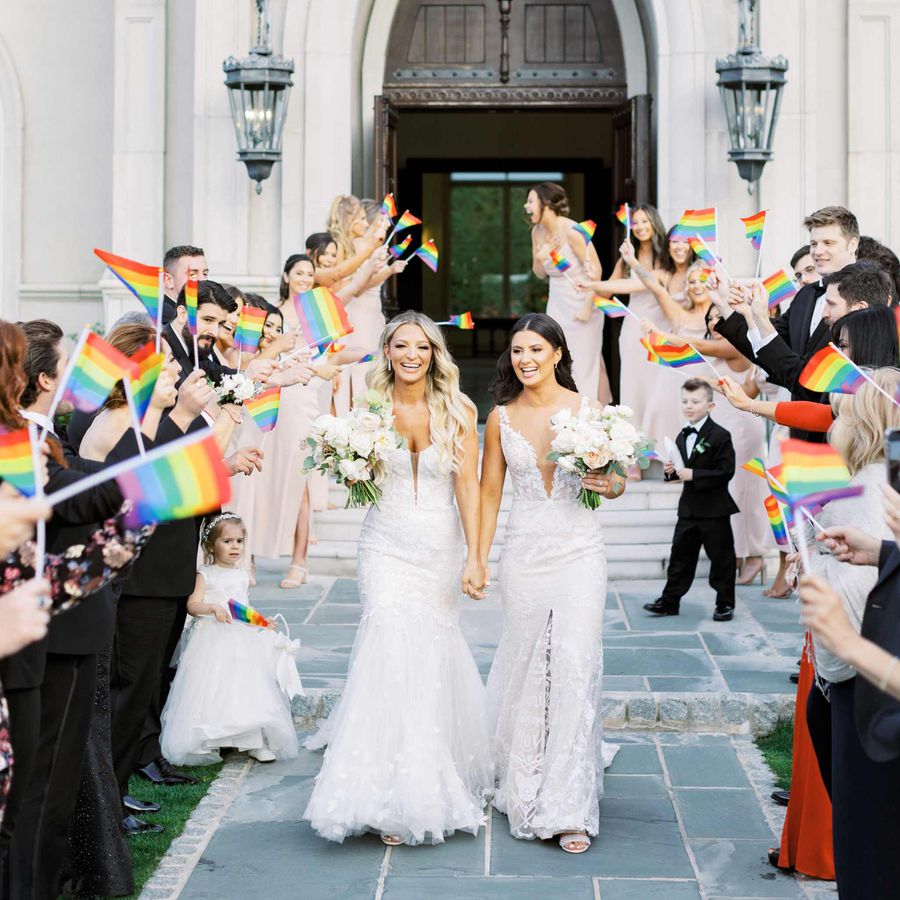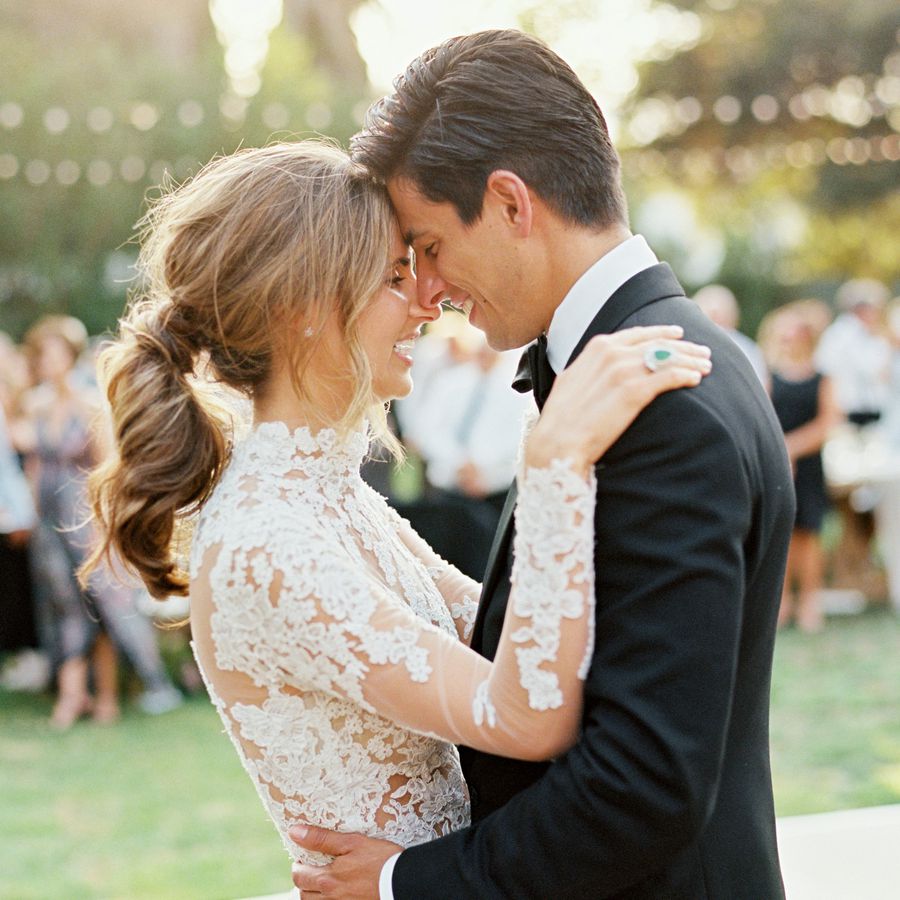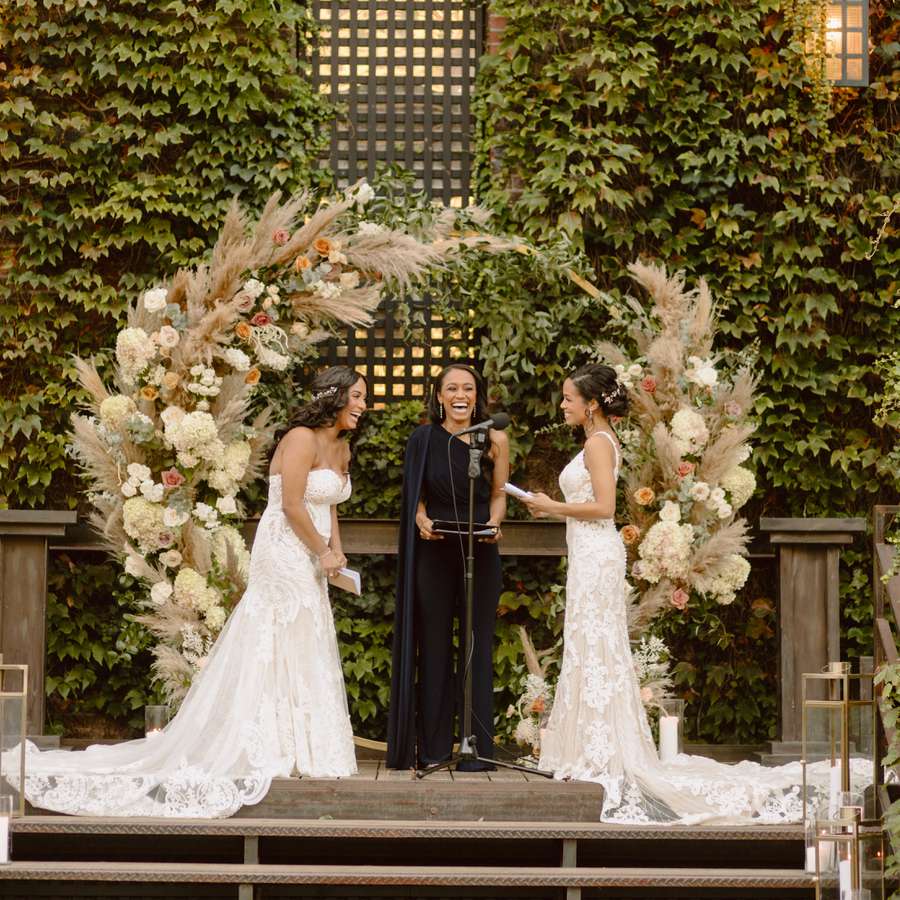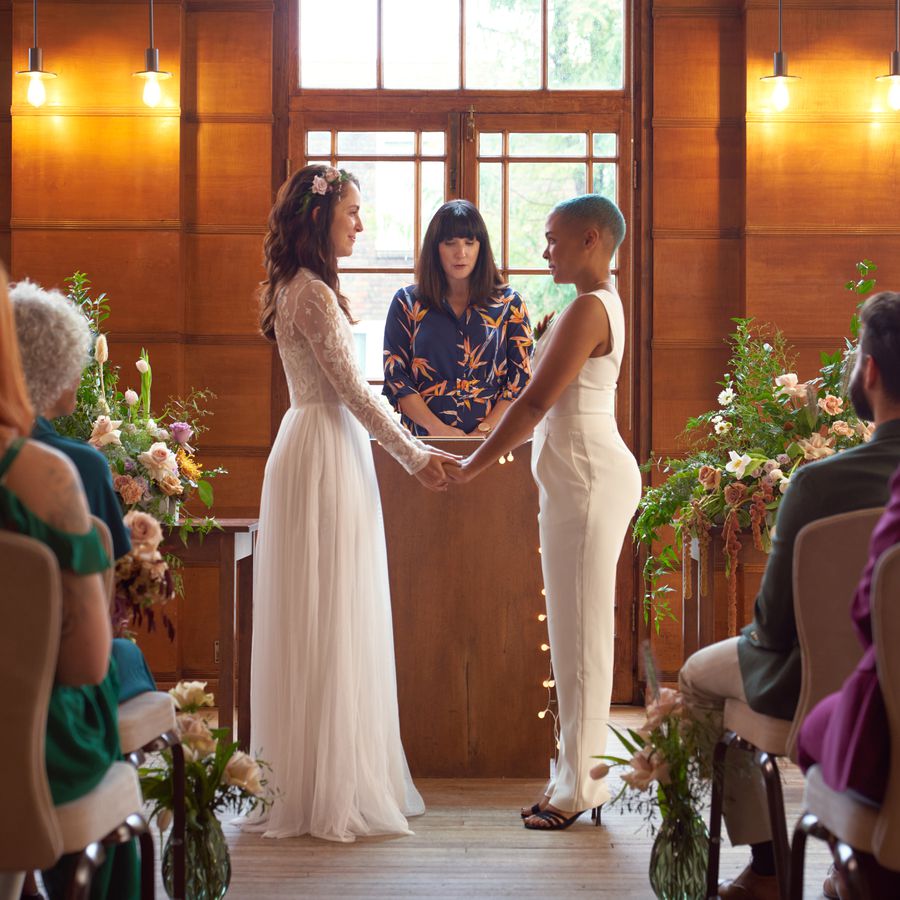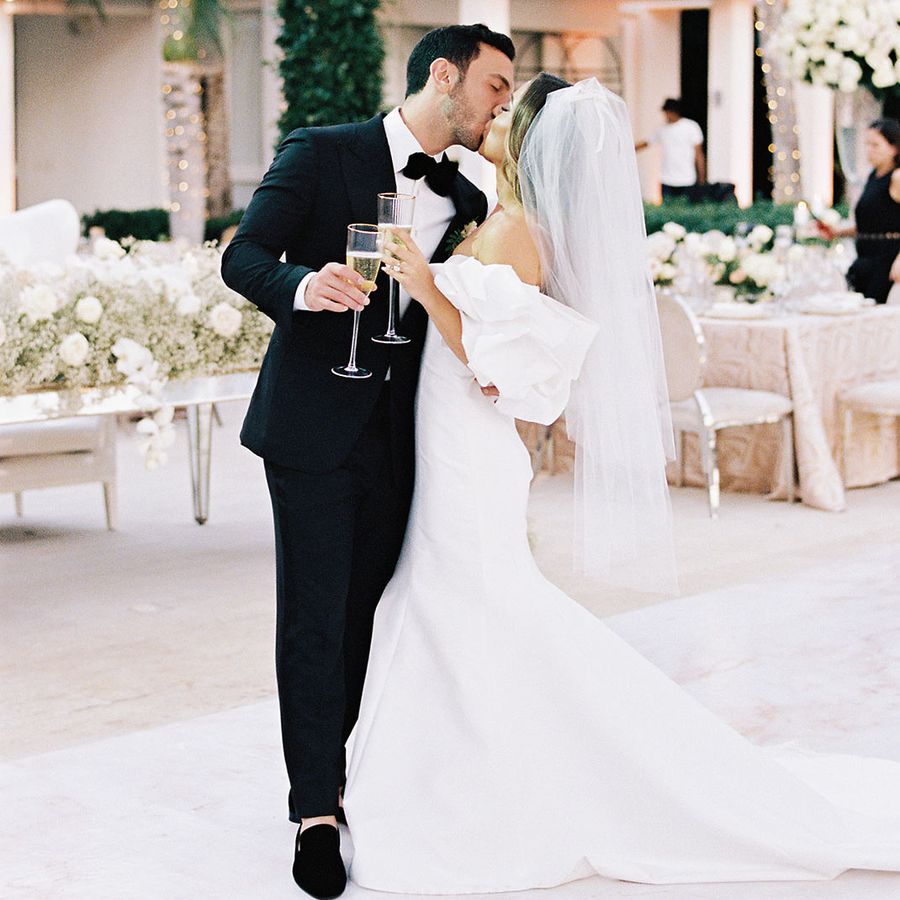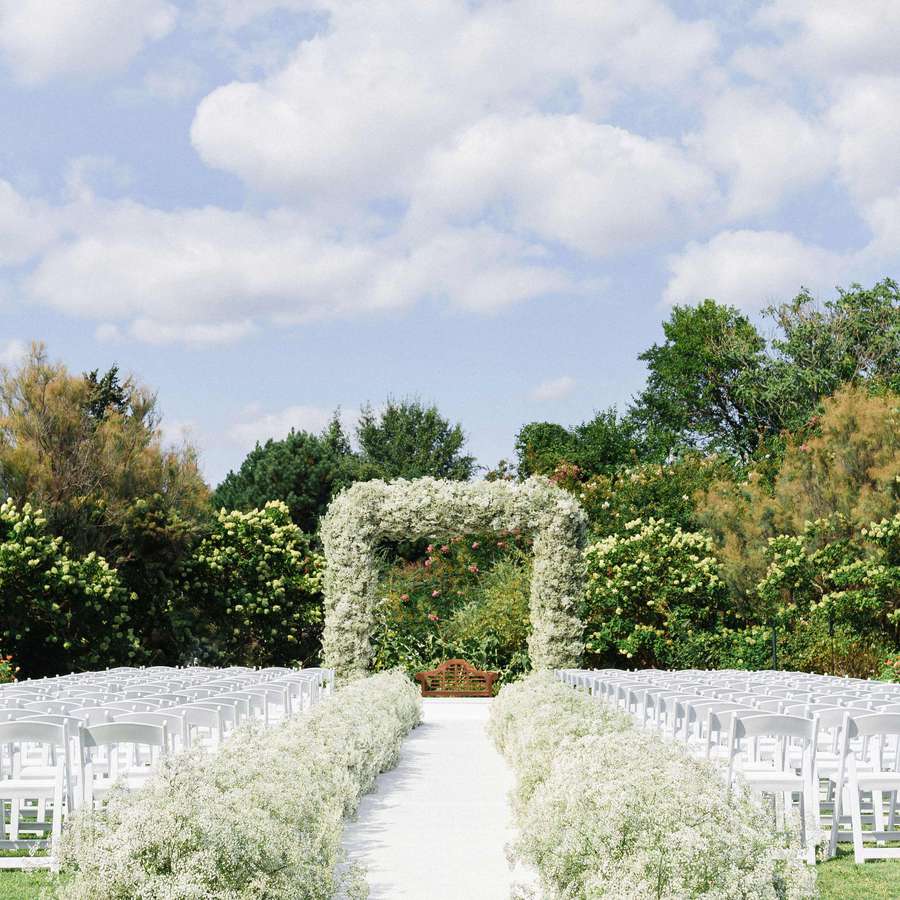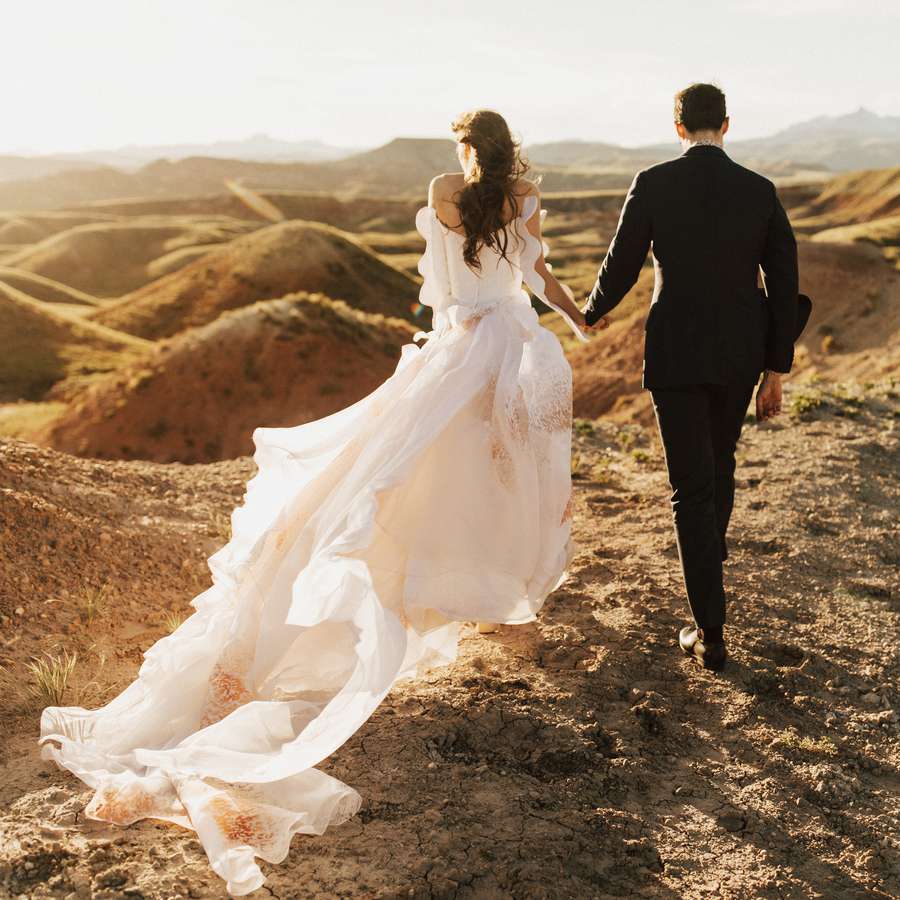:max_bytes(150000):strip_icc()/Yichud-jewish-wedding-5077202_1000x1000-c57aa71bc11343a4bcc3642a13ee783b.jpg)
PHOTO BY HEATHER KINCAID / Design by Michela Buttignol
As you likely already know, many cultures and religions have customs and practices that are passed down from generation to generation. In the Jewish community, specifically, the yichud is a tradition that is steeped in history and one that has been upheld for several centuries.
To break it down, the yichud is a moment during a Jewish wedding when the couple spends a few minutes in isolation after the ceremony. In religious circles, it is the first opportunity for the couple to have physical contact now that they are married. It’s also a chance for the couple to have a moment of reflection and intimacy during the wedding proceedings.
Though this tradition is already well known within the Jewish faith, we spoke with experts Rabbi Sara Shonfeld and Cantor Debbi Ballard to help highlight its history and meaning and provide information on modern-day practices. Here's everything you need to know.
Meet the Expert
- Rabbi Sara Shonfeld is an ordained Rabbi and wedding officiant who performs weddings all over Long Island and the Tri-State area.
- Cantor Debbi Ballard has officiated Jewish lifestyle events, including weddings, for over 16 years.
The History and Meaning of the Yichud
The word yichud comes from the Hebrew word yachad, which translates to together. As mentioned above, it refers to a moment in the proceedings where the couple comes together in a private room with no one else around. In more religious circles, the yichud is when a couple can touch for the first time after they are married.
“There are certain halachic authorities who maintain that the final stage of marriage is not finalized until the groom takes his bride to a secluded area where they spend some personal time together,” shares Rabbi Shonfeld. “Jewish law forbids a man and woman who are not married to each other from being secluded together. Entering the yichud room together is an act that symbolizes their newly married status.” In biblical times, this is also when the marriage would be consummated.
In more modern communities, however, the yichud has a more practical role. Cantor Ballard notes that the ritual is important because it gives couples time to reflect and take in their new reality. “They can breathe in their first breaths together as a married couple, sharing their most intimate thoughts and experiences in becoming husband and wife,” she says. “They are able to take in the magnitude of the shift that has occurred for them in a private space.”
Modern-Day Practices and Meaning
“In most modern weddings, the bride and groom are in high demand,” says Cantor Ballard. “That makes it even more important to take a few moments of seclusion whether it’s to eat a snack together, drink plenty of water, or simply embrace.”
As for where this practice takes place, it typically happens in a room separate from where the wedding guests are located. Many couples use the bridal suite or a small meeting room inside the wedding venue. According to Orthodox law, in particular, the room has to be able to be locked from the inside and the couple must remain in the room for at least eight minutes.
After the room is locked, witnesses, friends, or family members of the couple guard it against the outside to ensure the couple has complete privacy. Having a guard can be practical since a lot of wedding guests want to find the bride and groom to congratulate them, though Cantor Ballard notes that it’s not a problem at most weddings she’s seen. “The respect of privacy has never been violated in my professional experience," she shares.
When it comes to planning the yichud, the rabbi, along with the couple, organizes the logistics of this tradition. “It is very important while planning your wedding to be on the same page and discuss all the blessings, prayers, and cultural customs you would like to include as part of the wedding,” she says. “This can be discussed when the couple begins the process of creating the ceremony with their rabbi.”
Couples should coordinate with their wedding planner, photographer, and venue coordinator to make sure the yichud is part of the wedding timeline, and that there is ample time for family photos. Cantor Ballard also recommends discussing with catering what should be available in the yichud room from water to champagne to snacks.
Lastly, as for what happens during the yichud in modern times, Cantor Ballard notes that “What the couple does behind closed doors should remain only with the couple.” In general, some couples choose to take a moment to breathe and relax, while others exchange wedding gifts or read letters they wrote to one another. Some even use it as a time to pause and replenish amidst the craziness of a wedding day. In more religious circles, it is the first time the bride and groom have an opportunity for physical contact, and they may choose to exercise that new ability.
